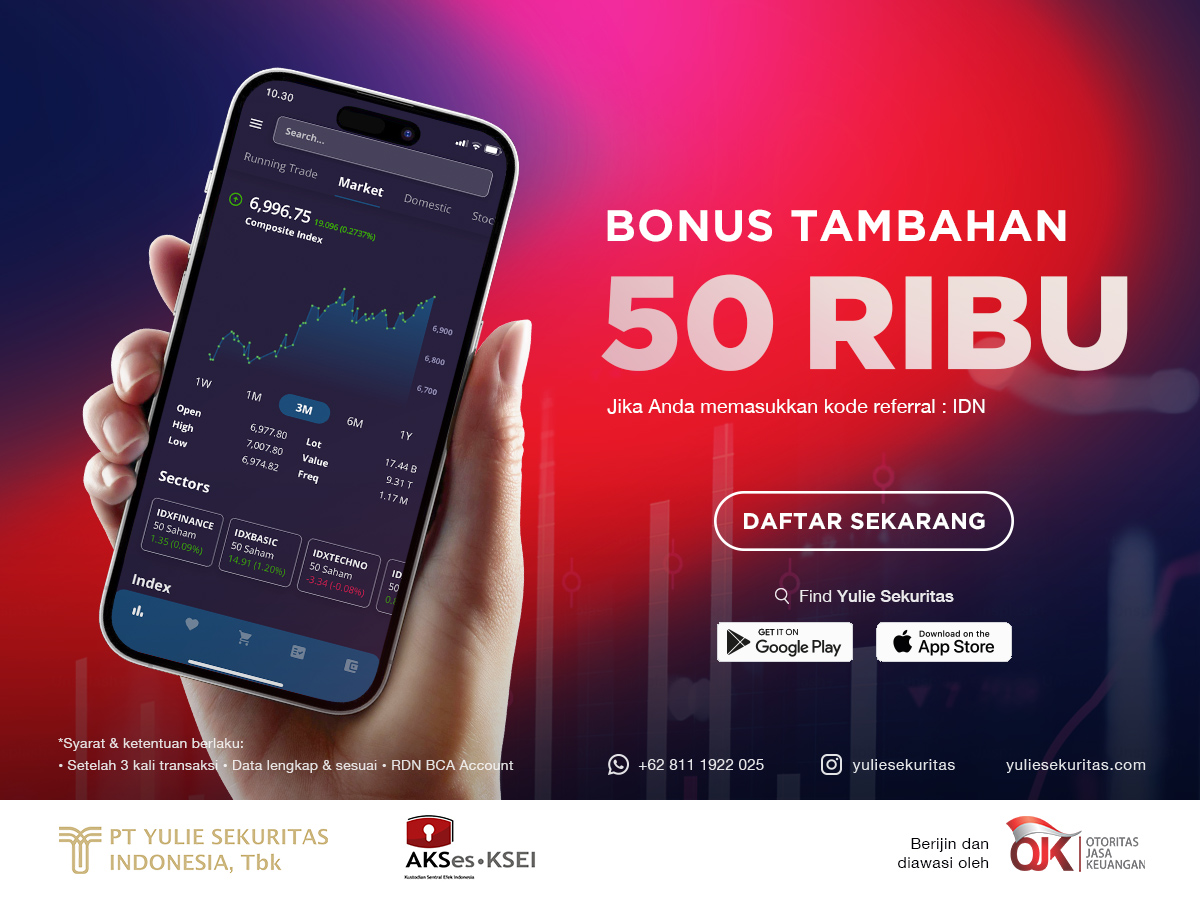ESG financing, BCA’s effort to drive debtors more environmentally friendly

JAKARTA - PT Bank Central Asia Tbk (BBCA) had channelled IDR 181.2 trillion worth of credits to Environment, Social, and Governance (ESG) sector, which is equal to 24.3% of the total credits of IDR 735.9 trillion at the end of the first half of 2023. The financing for this sector is in line with the government’s program to achieve net zero emission by 2060.
As a constituent of Indeks52, an index initiated by Tempo.co and IDNFinancials, this bank could be dubbed as the pioneer in ESG financing. Regarding the initial framework of this support, IDNFinancials is given the opportunity to interview Vera Eve Lim, Chief Financial Officer (CFO) of BCA, in BCA Tower, Jakarta, yesterday (2/8).
What is the reason behind BCA’s support in the sustainability financing?
We continue to support the government’s program regarding sustainability financing. Out of these three components of ESG, the governance begins in the banking industry, way before ESG is popular. After the 1998 monetary crisis, Indonesian banks were quite struggling. Then, we learned a lot, as did the regulators. We attempted to maintain our performance. We forfeited in 1998; and there was the importance of a good corporate governance (GCG). There have been many changes in the banking standard since then. We know that the banking industry is a highly regulated industry; the most regulated company. So, ESG for the banking industry, the G [governance] is not a new matter. From 2000s until now, we have been focusing in GCG area.
In terms of Social, this is the area to which we pay a lot of attention, as it includes user service, customer satisfaction, customer protection, and customer education. They all are within the Social area. We invest a lot, paying attention to aspects in the Social area.
Now, regarding environment, we welcome the government’s program and comply to the regulation set by the Financial Services Authority (OJK). The sustainable financing in BCA has covered almost 25% of our total business; it has become a qualified sustainable financing. For the sustainability sector, the total financing reaches IDR 181 trillion. If we are looking back five years ago, the sustainable financing might be measly. From all the sustainability sectors, we sort them out, as this sector expands daily. I have been observing for the past three years, and the financing that has been significantly increasing is for renewable energy, efficient energy, and business lines that drive improvement of environment. Their financings have increased.
The next three years, the target of sustainable financing of BCA will continue to grow. Today is 25% of total business. Five years ago, it was scant. So, in three or five years, the portion of financing for this sector may increase. Will it reach 50%? Possibly no, because the bank will focus on other sectors, such as consumption, including House Ownership Credit, Vehicle Ownership Credit, and others.
The demand for sustainable financing also continues to rise. Surely it must be supported by the government’s policy. OJK has introduced green taxonomy. This year, we comply, reporting 450 debtors. We focus in corporates that have begun to be mapped within the green taxonomy. The industries financed by banks are massive. The inter-department policy to regulate industry by industry to adopt more environmentally friendly energy must be managed. Thus, it needs integration as banks cannot create trades. We follow trades, and our portion is to finance. How the industry improves based on its environmental aspects will need support from each ministry that manages said sector. If it is integrated, and OJK requires banks to evaluate those sectors as green or not, it will create a better synergy.
Which business sectors in the renewable energy are BCA’s concern for financing?
If I may revise the word, it is not “concern,” but it is how we could encourage industry by industry to become more environmentally friendly each day. Starting this year, BCA enters the scope 3 carbon emissions. It is a much higher scope, as scope 3 requires us to calculate carbon emission generated by portfolios funded by BCA. In this case, we no longer talk about bank operation. For our bank operation, we have begun, since three years ago, to reduce carbon emission through bank operations. Thus, we highly encourage recycle. If we were talking three years ago, it may not be visible; there was no such thing in BCA. Today, let’s say an EDC machine is broken, then what we are going to do with the machine? We would have discarded them in the past. Then, there are debit and credit cards that could no longer be used. Users then return and replace them. Those plastic cards, collected within a year, reach 1 ton in volume. Those, too, are waste. Thus, within the bank operational scope, there is electronic waste, which is huge. It worsens with higher digital transaction.
Starting today, we make effort for this waste, if possible, reaching zero waste to landfills. They are broken down, then the metals are gathered, the plastics are processed, and so on. It actually needs special effort. Last year, BCA saved almost 2,000 tons of CO2 equivalent (CO2e) only through waste-related process. How we push more digital transaction, how the working space in our office branches save more energy, we are focusing there.
Scope 3 does not stop there. We have to calculate the carbon emission generated by portfolio funded by BCA. It starts this year. So, in the future, we would like to encourage our debtors in all sectors so that their carbon emission is reduced. We focus in corporate debtors. Corporate financing covers 44% of the total credit. Thus, it is a task, because we need to level our language with these industries. It needs effort and time. The positive thing is once the bank has made initiatives, banks would talk with each debtor, and encourage them to focus on becoming more environmentally friendly. In the future, we will consider incentives, assisting those debtors. We invite experts of certain industries to aid the debtors. So, it may require certifications or others.
Would those initiatives be reserved only for the business sector that reduces carbon emission?
Scope 3 carbon emission is to determine whether or not all those credits given to the debtors are exceptional. So, all must be calculated. In other words, it becomes our task once the data is collected; we should go back to each debtor to have discussions. In this case, there must be a policy support from each industry to have, what we call, a mutual effort.
For corporate debtors, they do not rely solely from bank funding. They will rely on funding from the capital market. They also need financing, and it is not possible to depend on one bank only. Corporate may take out from three to five banks, including foreign banks. Therefore, should banks that finance things start to put this into consideration, I believe corporate users will make effort to conduct more environmentally friendly operations. As of now, we start to see at least 20% debtors that begin to make their way there, starting to collect emission data. It requires time, because we have not talked about this before. There is a more advanced debtor. This debtor instead asks us to discuss regarding the roadmap for the next three years. So, it is a part of a journey. We must consider the positive side. I imagine, in three years from now, it all will improve.
To be continued… (LK/ZH)

